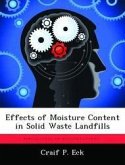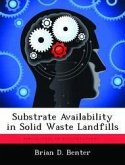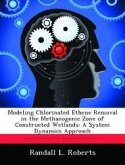The amount of municipal solid waste discarded to landfills is continually increasing even with extensive recycling efforts. The need to understand the behavior of waste in landfills is increased due to the decreasing number of active landfills, communities concern to the potential hazards associated with landfills, and companies or installations with landfills on-site need to understand landfill behavior because they must comply with new legislation concerning design and detecting hazardous material movement of-site. This research is focused on increasing the understanding of landfill behavior by examining the effects of temperature in a landfill system. A system dynamics approach was used in this research to develop and build structure to produce landfill behavior. Two reference modes using gas generation and a basic microbial growth curve were used as verification mechanisms. Initial verification and validation were preformed in separate sections then added to Shelley's landfill model to verify that the additional temperature structure more accurately modeled landfill behavior. Results show that an equation responsive to temperature effects on microbial growth and death, more accurately depicts landfill behavior. Increased understanding of how heat is lost from a landfill will increase the usefulness of this model. An inclusive model will help landfill operator's build and manage landfills to optimize performance and biodegradation over the lifetime of a landfill.








